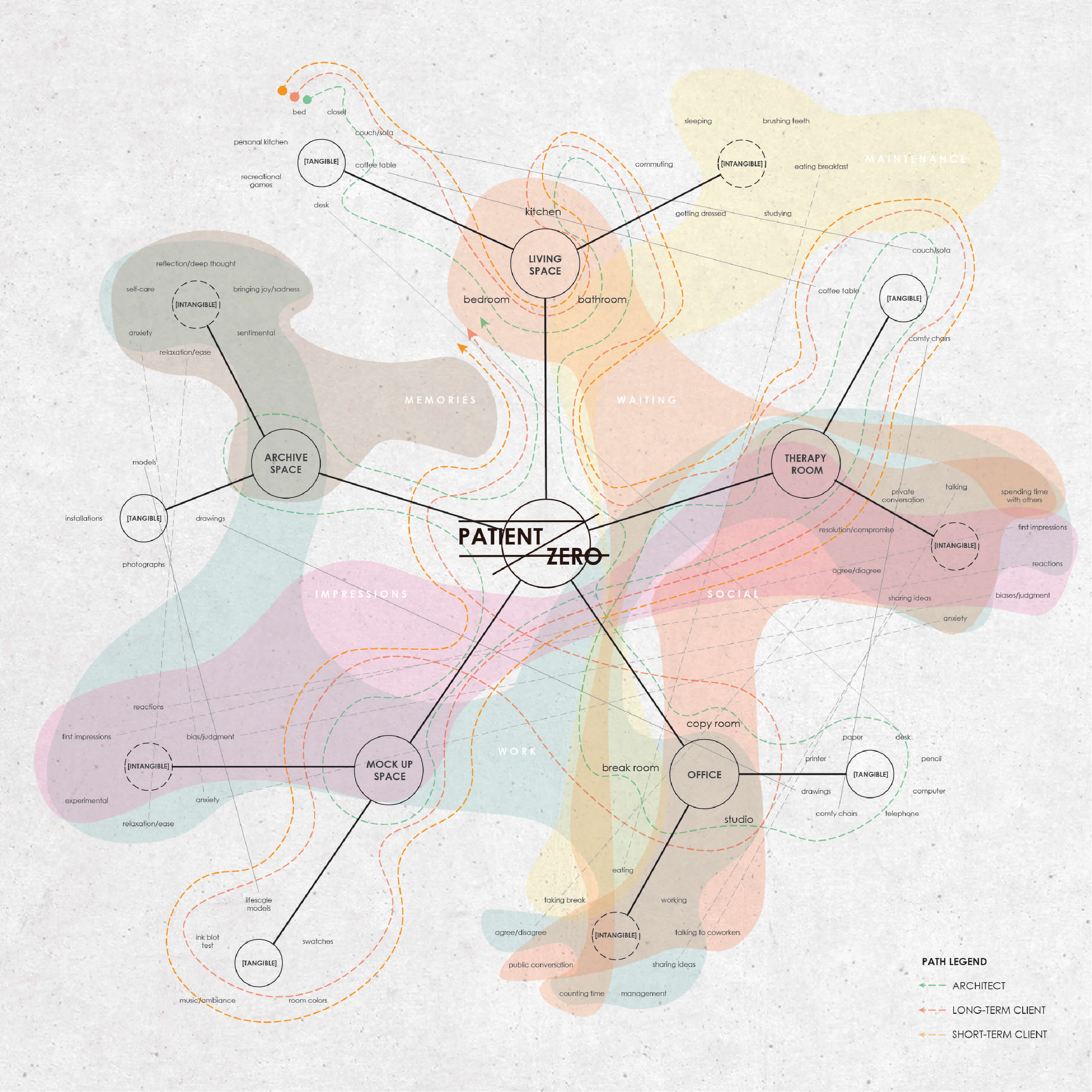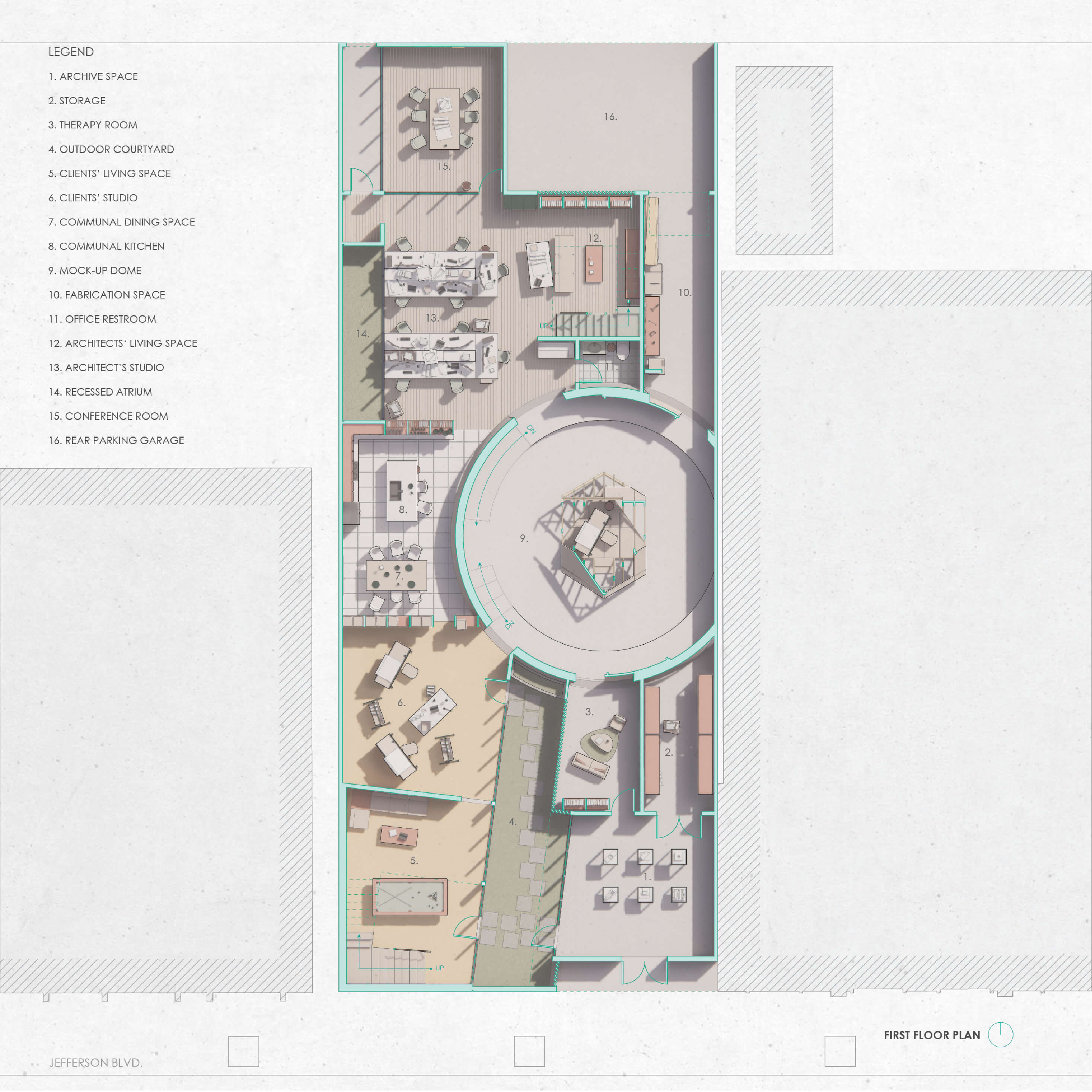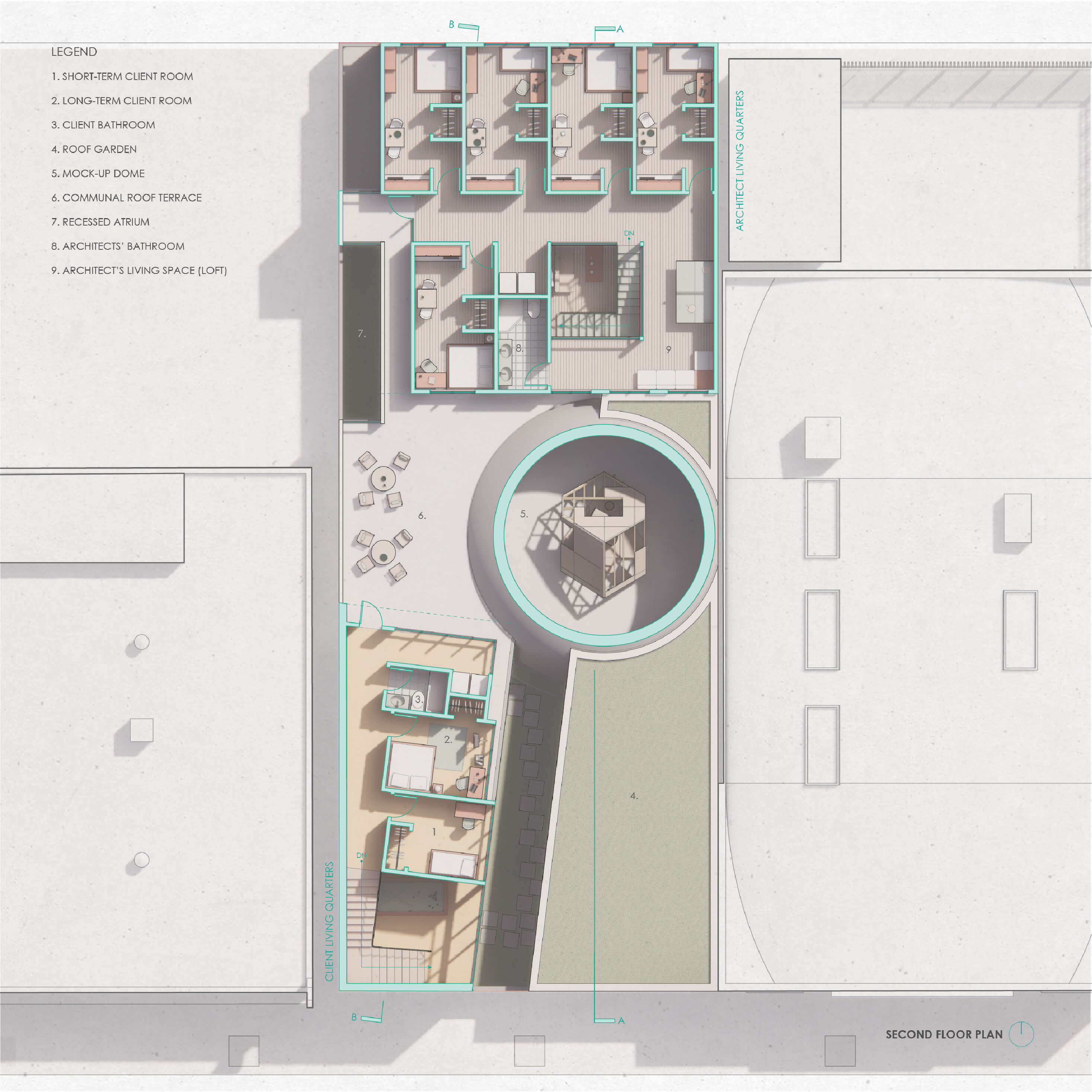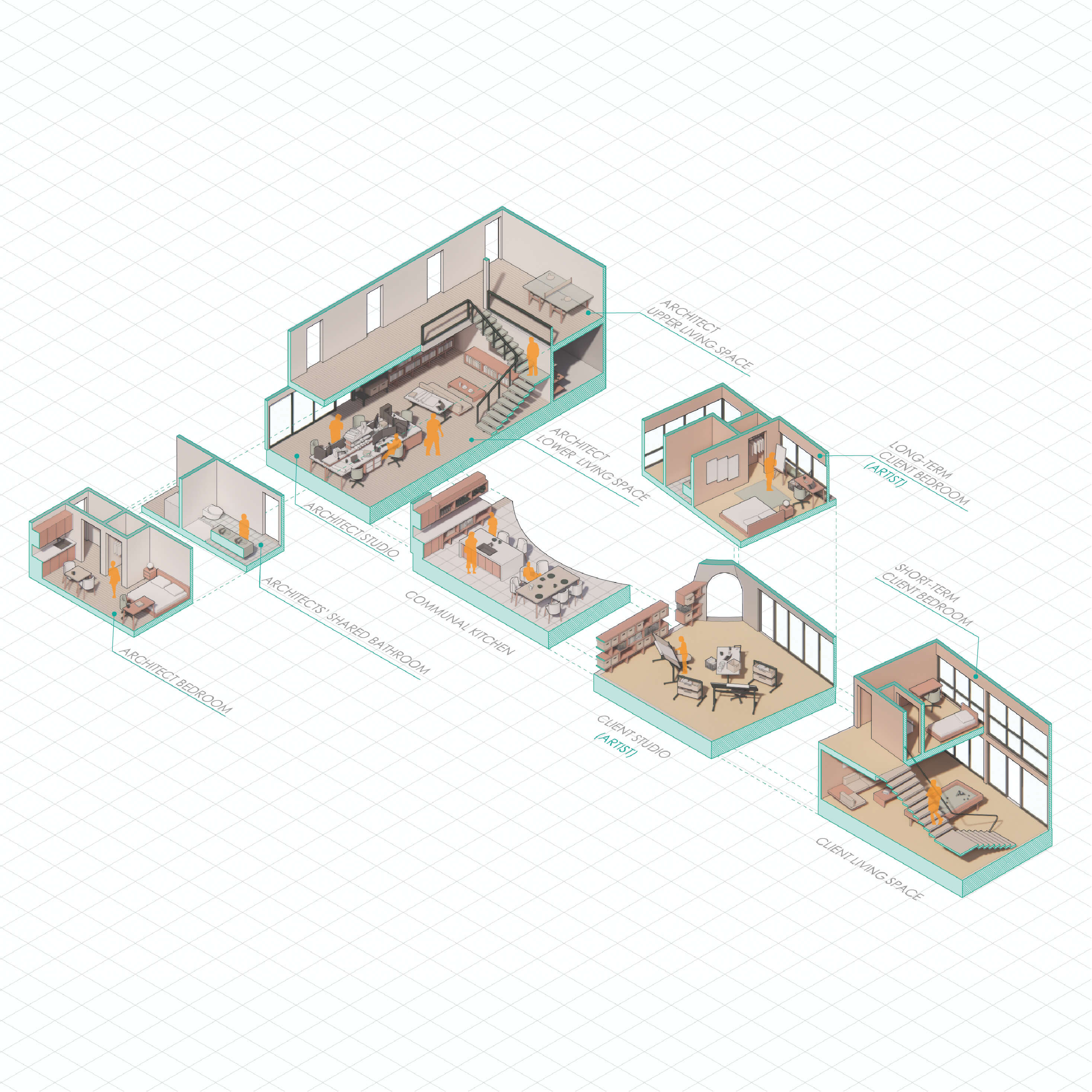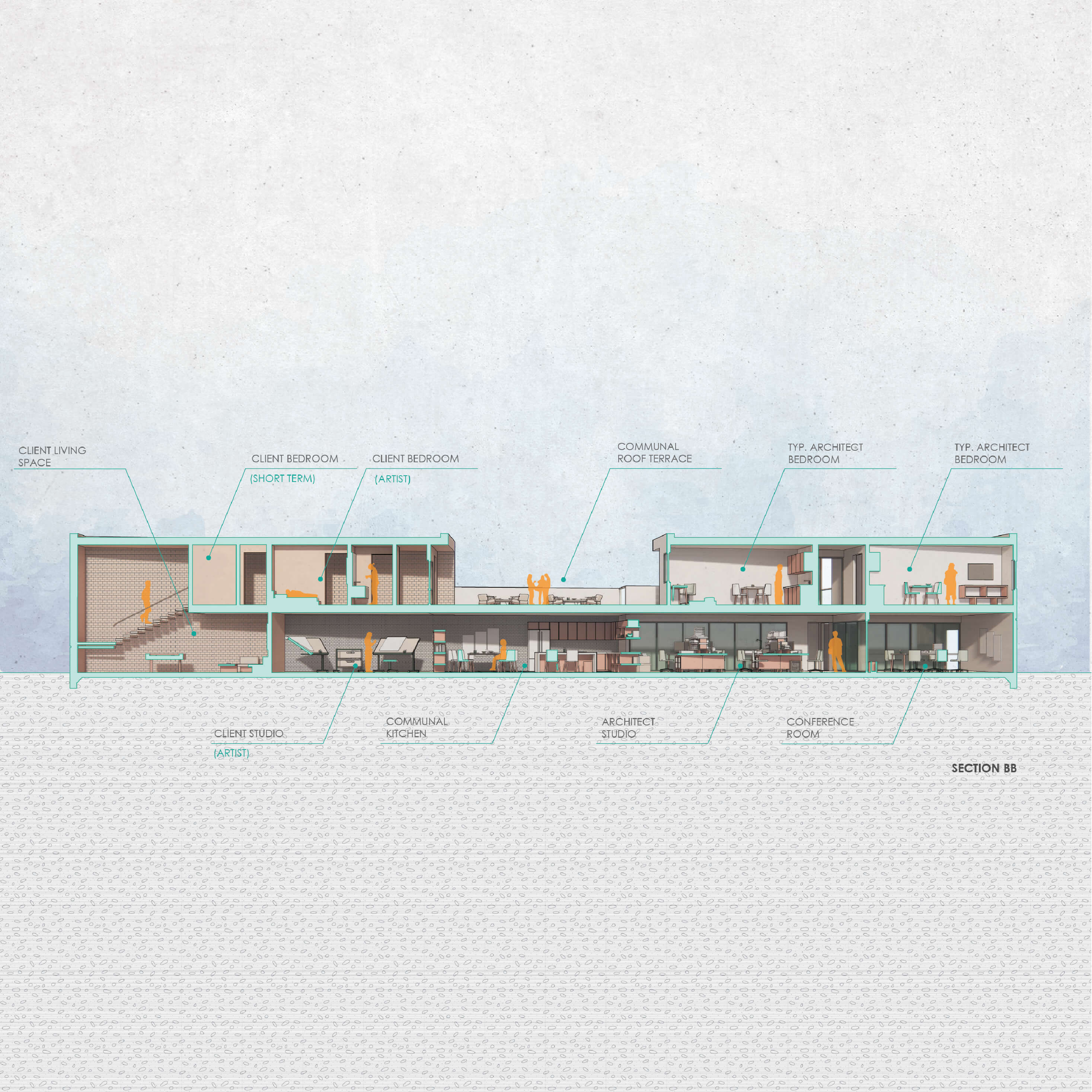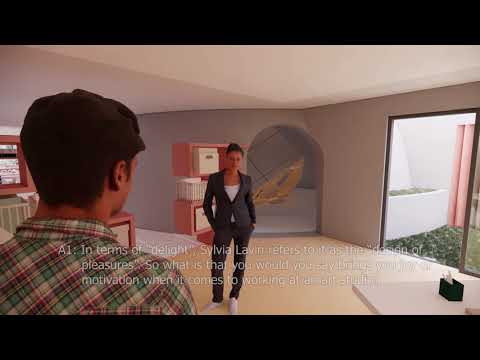Patient Zero
Much of the lineage found in architectural history books document the various theories
and cultural shifts up to the end of the twentieth century leaving architecture’s future still unwritten; continually drawing heavily from its past. The success of the discipline relies on its ability to balance its own established identity while being receptive towards new methodologies of design. Here at Patient Zero, we believe that the discipline of architecture should lean towards enmeshing elements of psychology and therapy to regain pertinence in a contemporary setting. This interchange between two distinct protocols shapes a new type of practice.
The link between architecture and psychology traces back to Vitruvius’ triad describing qualities of an ideal building which include “firmness, commodity, and delight”. In contemporary design, the “delight” can be attributed to the “design of pleasures” according to Sylvia Lavin which ties the two disciplines.
By conjoining the commonalities between therapy and architecture, we seek to help explore the design problems of our clients based on their needs and lifestyle. Our unorthodox design approach draws inspiration from therapeutic response treatments in which we simulate a “setting” for clients to respond to a particular built environment. These would come in the form of mock-ups in our office that are built to life-scale with the intention of revealing a client’s unconscious thoughts, motives, and desires.
Our process allows us to progress closer towards a design that exudes pure “delight” in the eyes of Vitruvius. A successful design for our practice is one that may not necessarily bring foreseeable, measurable results. Rather, we firmly believe that success coincides with client satisfaction which tends to be overlooked.



